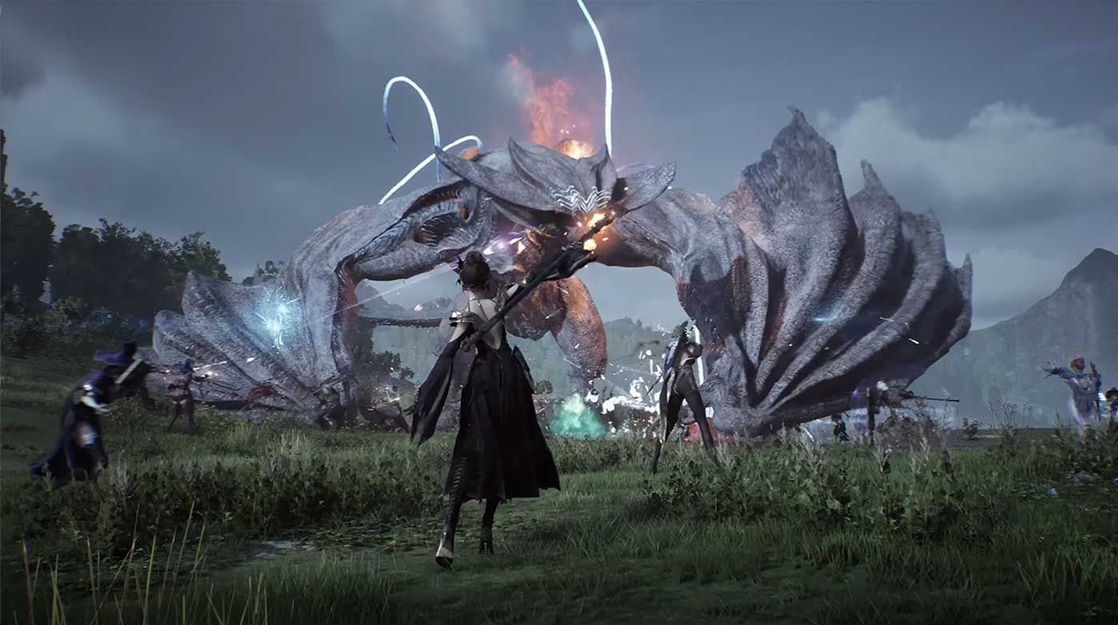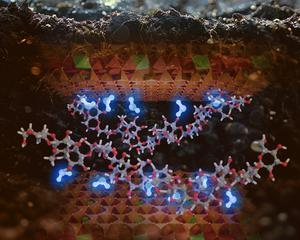Today, the Department of State is designating The Balochistan Liberation Army (BLA) and its alias, The Majeed Brigade, as a Foreign Terrorist Organization (FTO), and adding the Majeed Brigade as an alias to BLA’s previous Specially Designated Global Terrorist (SDGT) designation.
BLA was designated as an SDGT in 2019 following several terrorist attacks. Since 2019, BLA has claimed responsibility for additional attacks, including by the Majeed Brigade. In 2024, BLA claimed it had committed suicide attacks near the airport in Karachi and the Gwadar Port Authority Complex. In 2025, BLA claimed responsibility for the March hijacking of the Jaffar Express train traveling from Quetta to Peshawar, killing 31 civilians and security personnel and holding hostage over 300 train passengers.
Today’s action taken by the Department of State demonstrates the Trump Administration’s commitment to countering terrorism. Terrorist designations play a critical role in our fight against this scourge and are an effective way to curtail support for terrorist activities.
Today’s actions are taken pursuant to section 219 of the Immigration and Nationality Act, as amended, and Executive Order 13224, as amended. FTO designations go into effect upon publication in the Federal Register.
Blog
-

Terrorist Designation of The Majeed Brigade
-

UFC In Bars And Theaters
At a bar or theater, you can feel the buzz off fellow fight fans as you watch fight night unfold while partaking in food and drinks from wherever you are watching. In a theater, the concessions, big screen and auditorium seating provides the closest thing to sitting in the arena itself.
To find a venue showing the fights close to you, click here.
For Bar Owners And Operators:
MMA has long been one of the fastest growing sports in the world, and UFC leads the charge. UFC fans are loud and proud and love to have a good time. When you purchase UFC events, your location will also be included on the UFC Bars map. Check out some of the stats below on how UFC can help your business
Continue Reading
-

Cause of Death Confirmed For Brandon Blackstock, Kelly Clarkson’s
Less than a week after his passing at age 48, the cause of death for Brandon Blackstock has been revealed. The Nashville music manager who was married to Kelly Clarkson for seven years died peacefully at his home in Butte, Montana on Aug. 7 while under hospice care, surrounded by his family, according to a statement to People magazine from Silver Bow coroner Dan Hollis.
Hollis also confirmed that the cause of death was melanoma, a form of skin cancer, while the manner of death was natural causes.
According to the Mayo Clinic, melanoma is a form of skin cancer that begins in the Melanocytes, the cells that make the pigment that gives skin its color. While the exact cause of melanoma isn’t known, most are caused by exposure to UV light from sunlight or tanning beds.
Following his death, Blackstock’s longtime employer, Starstruck Entertainment, issued a statement sharing the news. “It is with great sadness that we share the news that Brandon Blackstock has passed away,” it read. “Brandon bravely battled cancer for more than three years. He passed away peacefully and was surrounded by family. We thank you for your thoughts and prayers and ask everyone to respect the family’s privacy during this very difficult time.”
The news about Blackstock’s death came a day after Clarkson said she was postponing her August residency shows in Las Vegas so she could be with the couple’s children during Blackstock’s illness. Son of Starstruck co-founder Narvel Blackstock, Brandon was formerly the stepson of country icon Reba McEntire, who was married to his father for 26 years.
Years after meeting when his dad was Clarkson’s manager, the “Since U Been Gone” singer and Brandon married in 2013 and had two children together, 11-year-old River in 2014 and 9-year-old Remington in 2016. Clarkson filed for divorce in 2020 and after a lengthy legal battle they settled their split in 2022.
In addition to his children with Clarkson, Brandon is also survived by his kids with ex-wife Melissa Ashworth — Savannah and Seth — and a young grandson named Lake.
Get weekly rundowns straight to your inbox
Sign Up
Continue Reading
-

Sombr Announces Debut Album ‘I Barely Know Her’ Release Date
Sombr has announced his debut album “I Barely Know Her,” a 10-track collection releasing on Aug. 22 via Warner Records.
The singer-songwriter (born Shane Boose) wrote the entirety of the record and co-produced it with Tony Berg, who has worked on records from Taylor Swift, Phoebe Bridgers and Boygenius. Sombr recently released the funk-inspired single “12 to 12” and dropped an accompanying video co-starring Addison Rae.
“I Barely Know Her” arrives on the heels of a red-hot year for the 20-year-old, who scored two concurrent chart hits with “Back to Friends” and “Undressed.” Both songs picked up steam on TikTok before impacting the Billboard Hot 100, with “Back to Friends” reaching No. 31 and Undressed hitting No. 25. Both singles appear on “I Barely Know Her,” as well as “12 to 12” and the freshly released “We Never Dated.”
Sombr, who dropped out of high school to pursue music after his 2022 hit “Caroline” took off, was recently included on Variety‘s Young Hollywood Impact List, explaining that his sudden rise can be credited to his creative honesty. “My music is resonating because it came from my heart,” he said. “All I want to do is keep writing and touring and serving [my supporters] for the rest of my days. That’s what gives me purpose.”
The New York City native is planning to hit the road this fall with a sold-out international tour with stops in the United States and Europe.
Check out the tracklist for “I Barely Know Her” below:
crushing
12 to 12
i wish i knew how to quit you
back to friends
canal street
dime
undressed
come closer
we never dated
under the matContinue Reading
-

Scientists say most giant dinosaurs had surprisingly wimpy bites | National
Markus Spiske
By Stephen Beech
Tyrannosaurus rex may have been one of the few fearsome dinosaurs to pack a mighty bite, suggests new research.
A study of 18 dinosaur species showed that the jaws of many of the prehistoric predators were much weaker than previously thought.
While the Tyrannosaurus skull was optimized for quick, strong bites like a crocodile, other giant dinosaurs that walked on two legs – including spinosaurs and allosaurs – had much weaker bites and instead specialized in slashing and ripping flesh.
Scientists say their findings, published in the journal Current Biology, show that meat-eating dinosaurs followed “different evolutionary paths” in terms of skull design and feeding style despite their similarly gigantic sizes.
(Rowe and Rayfield, Current Biology via SWNS)
Study co-author Dr. Andrew Rowe, a palaeontologist at the University of Bristol, said: “Carnivorous dinosaurs took very different paths as they evolved into giants in terms of feeding biomechanics and possible behaviours.
“Tyrannosaurs evolved skulls built for strength and crushing bites, while other lineages had comparatively weaker but more specialized skulls, suggesting a diversity of feeding strategies even at massive sizes.
“In other words, there wasn’t one ‘best’ skull design for being a predatory giant; several designs functioned perfectly well.”
Dr. Rowe says he has always been fascinated by large carnivorous dinosaurs, and he considers them interesting subjects for exploring basic questions in organismal biology.
He and co-author Professor Emily Rayfield, also from the University of Bristol, wanted to know how bipedalism – walking on two legs -influenced skull biomechanics and feeding techniques.
It was already known that despite reaching similar sizes, predatory dinosaurs evolved in different parts of the world at different times and had very different skull shapes.
Markus Spiske
Those facts raised questions for the Bristol team about whether their skulls were functionally similar under the surface or if there were notable differences in their predatory lifestyles.
As there are no massive, bipedal carnivores alive today – since the mass extinction event around 66 million years ago at the end of the Cretaceous period – the researchers say that studying them offers “intriguing” insights into a way of life which has since disappeared.â¯
To examine the relationship between body size and skull biomechanics, the team used 3D technologies, including CT scans and surface scans to analyze the skull mechanics, quantify the feeding performance, and measure the bite strength across 18 species of therapod.
While they expected some differences between species, they were surprised when their research showed “clear” biomechanical divergence.
Dr. Rowe said: “Tyrannosaurids likeâ¯T. rexâ¯had skulls that were optimized for high bite forces at the cost of higher skull stress.
“But in some other giants, likeâ¯Giganotosaurus, we calculated stress patterns suggesting a relatively lighter bite.
“It drove home how evolution can produce multiple ‘solutions’ to life as a large, carnivorous biped.”
EESOFUFFZICH
Skull stress didn’t show a pattern of increase with size.
Some smaller therapods experienced greater stress than some larger species due to increased muscle volume and bite forces.
The findings show that being a predatory biped didn’t always equate to being a bone-crushing giant.
Dr. Rowe said that unlike T. rex, some dinosaurs – including the spinosaurs and allosaurs – became giants while maintaining weaker bites more suited for slashing at prey and stripping flesh.
He added, “I tend to compareâ¯Allosaurusâ¯to a modern Komodo dragon in terms of feeding style.
“Large tyrannosaur skulls were instead optimized like modern crocodiles with high bite forces that crushed prey.
“This biomechanical diversity suggests that dinosaur ecosystems supported a wider range of giant carnivore ecologies than we often assume, with less competition and more specialisation.”
Continue Reading
-
Liver cancer linked to fatty liver disease projected to increase by 2050 – Liver Disease News
- Liver cancer linked to fatty liver disease projected to increase by 2050 Liver Disease News
- Deadly drink: How alcohol is fuelling Kenya’s liver cancer crisis Daily Nation
- Lancet Commission Suggests 10-Point Plan To Prevent Millions Of Cases Of Liver Cancer ETV Bharat
- International commission calls for action against hepatocellular carcinoma News-Medical
- Most liver cancers are preventable, study says MSN
Continue Reading
-

‘Once again, the west turns away’: a new book recounts the fall and rise of the Taliban | Books
Jon Lee Anderson is “not done with Afghanistan”, despite having reported on it for more than 40 years, through invasions, occupations, the rise and fall of the Taliban and two great power retreats.
“I always want to go back,” said the New Yorker staff writer. “It gets into your skin. Afghanistan is an incredible place, an incredible society. It’s always like time travel to me, and I knew people there that are larger than life. They stay with you … I may return shortly.”
Now 68, Anderson reported from Afghanistan in the 1980s, as Soviet forces lost a 10-year war, and returned in the 2000s, after 9/11 prompted the US to invade. In 2002, Anderson published The Lion’s Grave, a well-received book on al-Qaida’s assassination of the mujahideen leader Ahmad Shah Massoud two days before the attacks on New York and Washington, and how the US ousted the Taliban.
In the foreword to his new book, Anderson writes of that time: “The mission of the US and its coalition allies appeared to have been a qualified success. The Taliban had vanished into the hills, as had al-Qaida, and a pliant new pro-western regime had been installed.”
The new book contains reporting on the 20-year US occupation, its chaotic end, and the Taliban’s return. So its title is telling: To Lose a War.
One standout chapter comes from 2010. US control had deteriorated. Given no choice, Anderson embedded with a cavalry squadron in Maiwand, in the south. The resulting report, The Day of the Superwadi, is bookended by the deaths of young Americans in IED explosions – an unsparing portrait of military might mired in lethal futility. At the time, Anderson refused to let it be published.
He was “severely disappointed to see that what had happened in Iraq, which I had witnessed firsthand [the subject of his 2004 book, The Fall of Baghdad] had happened in Afghanistan: the suicide blast walls were up, Kabul itself was behind this strange geometry of walls, westerners were cut off from the Afghans”.
Anderson “really disliked” embedding. He felt “incredibly alienated, displaced. It was exactly in the same area I’d reported from back in the late 80s, and yet I was even displaced from that. I left Afghanistan feeling really nonplussed and telling my editor I didn’t think I had a story. And he said: ‘No, come on. You can write it.’ And I did, and I still had this just, dead feeling. I don’t know if it’s the only story in the New Yorker’s history, or one of very few, where an author has asked the editors to kill it, but I did and they honored that. And I said: ‘I feel I have to go back, because this story doesn’t feel right.’ And I did go back.”
To Lose a A War by Jon Lee Anderson. Photograph: Penguin Random House In 2011, Anderson embedded again but with Afghan soldiers, too, on the Pakistan border. The result was another powerful essay, Force and Futility.
“I was able to define better what I was seeing,” Anderson said. “Clearly, I was always a foreigner, an outsider, but I had that experience of being with Afghans.”
More than a decade later, putting together To Lose a War, Anderson finally saw the value of the piece he had killed. He “realized it had an integrity. It helps fill in the blanks. Ultimately, if I have a critical observation, it’s that the United States … I mean all of the west, but really it was always US-led … they never really engaged with Afghanistan. That was what I was feeling. I knew it to be just a terrible thing. [The US effort] was doomed because of that.”
Anderson provides compelling portraits of American soldiers in extremis. Prey to the shifting realities of Afghanistan, Lt Cols Bryan Denny and Stephen Lusky are driven, idealistic and lost.
“They were honorable men,” Anderson said. “At the point I was seeing them in the war, the chance to win had passed. They never came out and said, ‘This is doomed.’ They couldn’t: they had young, young boys they were trying to keep alive, and they were doing the best they could. But I had this really strong sense that they knew.
“This was their job. It was an honorable thing. And what was interesting, and I guess among some soldiers you do find this, was this sense of idealism. We tend to objectify them: guns and uniforms and so on. But actually the US military includes a hell of a lot of idealists, many more than you tend to meet in your life. They try to believe in what they’re doing, because they’re dealing with life and death every day. So I try to acknowledge that but also get to the human story.”
Maiwand, where Lt Col Denny served, was home to a physical reminder of Afghanistan’s bloody history. About 10 miles (17km) from the US base stood “a very large, oddly shaped dirt mound … ris[ing] inexplicably up from the flatland”. In 2011, it housed the Afghan national police. It was built thousands of years before, by Alexander the Great.
The Americans stayed for 20. Combat operations ended in 2014, under Barack Obama, but the last troops left in 2021, Joe Biden overseeing a withdrawal initiated by Donald Trump. The result was bloody chaos: 13 Americans and at least 170 Afghans killed by a suicide bomber, the Taliban surging back to power, civilians scrambling to get out.
Anderson helped Afghans escape. He also went back to report, “with the central question that we all had, which was: ‘Is this the old Taliban or the new Taliban?’ We didn’t really know.
“In the first missives out of there, we saw our colleagues interviewing guys dressed in the usual Kandahar shalwar kameez [traditional tunic and trousers], and also another group of Taliban dressed up in American special forces uniforms,” he continued. “And we saw that they no longer were prohibited to deal with the graven image, because they had smartphones. So there was this kind of hope that they were different.
“And so most of my foray involved trying to get in front of Taliban officials, whoever I could, and guys in the field, and ascertain where their heads were at and whether they were, in fact, the new warm and fuzzy or the old astringent and cruel Taliban.
“I came away, especially from the leadership, with apprehension. I didn’t feel that they dealt with me honestly … whether it was the guy in Bamiyan or the foreign minister designate or the information minister in Kabul. And so that remains unresolved.”
Anderson seems more certain about the fate of Afghan women.
“Pretty much every woman I met who was able to talk with me on their own asked me for help to get out of the country,” Anderson said. “Not just women. Pretty much everyone I met who was not with the Taliban asked me, whether it was a civil servant, an assistant in the ministries, stewardesses on an airplane.
“I met this group of women I talked to at length, and I followed up with some of them, and they knew what was coming. I don’t say it in the book, but I remained in touch with one. She managed to get her family out. First in Mexico, now in the States. I don’t know if they’re deportable [by Trump] or not.
“One woman said: ‘I know what’s coming. I know what they’re going to do.’ And she was right. It’s even worse than what one would have expected four years ago. Women have been formally prevented from speaking outside their homes, which are like fortresses. They can’t travel without a male companion from their family. I don’t even know what they’re doing about maternity wards in hospitals now.”
Anderson sees few signs for optimism.
A military transport plane launches off while Afghans who cannot get into the airport to evacuate, watch and wonder while stranded outside, in Kabul, Afghanistan, 2021. Photograph: Marcus Yam/Los Angeles Times/Getty Images “There are factions within the Taliban,” he said of the perennial struggle for power. “It’s not over. Will this come to blows? It could.”
Among warring parties is an Islamic State offshoot Anderson called “Frankenstein’s Isis, Isis Khorasan, which is just a more extreme version of the Taliban.
“Afghanistan has never gone to a new stage without spilling blood,” he continued. “There’s a few countries like that. This conceit we have in the west, that you can only get to the next threshold of history through peace negotiations or some kind of civic compact … it doesn’t happen in the old world. It doesn’t happen in this place. The new stages are always reached through bloodshed.
“And I don’t know how you break that dynamic, but this group in power now has not broken it, nor will they break it. They’re seeking it with new injustices that will need to be redeemed or avenged. And that’s just the way it is.
“And once again, the west turns away, because Afghanistan is a place of shame and failure. But it’s still there. Just like it was for the Soviets, just like it was for us, and so on back through time.”
Continue Reading
-

Chrono Odyssey quietly delayed by a year after poor beta feedback | Esports News
Everyone held high expectations for Chrono Odyssey, but the beta itself showed them that it didn’t live up to the expectations. As a result, this highly anticipated title now has been delayed beyond its initial release date, that too by a year.However, the beta wasn’t the only source of criticism as Chrono Odyssey was absolutely blasted because of its uncanny similarities to other MMORPGs in the market, reminding us of another controversial title, Light of Motiram, which was criticized for the same reason.
Chrono Odyssey gets delayed by a year

Chrono Odyssey is now slated to be released in 2026. | Image via Kakao Games.
After the beta phase of Chrono Odyssey got live from June 13 to June 17 this year, fans instantly came to the same conclusion that the game needed a lot of improvements. This MMORPG featured unique aspects like a time-manipulation “Chronotector” mechanism along with a vastly diverse customization option. But several issues like performance woes, animations and UI problems, faulty servers, and many more dragged the game down.That is why publisher Kakao Games has decided to push the release date by a year, beyond its initial release window of Q4 2025. However, the developers didn’t announce it beating loud drums, as this new update came from the recently revealed Q2 2025 earnings call of Kakao Games. As per that report, Chrono Odyssey is now slated to be released in Q4 2026.Despite the delay of this game being confirmed, it would be interesting to see how the developers frame the announcement of the delay. Kakao Games already acknowledged that it had already been working effectively to rework the entire game. So, after this announcement, a delay was quite imminent keeping in mind the current state of the game and its concurrent issues. Chrono Odyssey is a highly ambitious project of both Kakao Games and Chrono Studios. So, there is no doubt that the developers will make sure that the game comes out in a completely new look, with close to zero issues at least. Chrono Studios also admitted that the beta phase featured an older version of the game. So, fans should expect more beta tests on their way, as a second edition of the close beta and an open beta is slated to be launched soon.Read More: 5 most anticipated upcoming MMORPGs
Continue Reading
-

How organic matter traps water in soil — even in the driest conditions
image:
Illustration of water trapped as molecular bridges at carbohydrate-clay interfaces.
view moreCredit: Aristilde Research Group/Northwestern University
From lifelong farmers to backyard gardeners, most plant-lovers know that adding organic matter to a field, vegetable plot or flowerpot increases the soil’s moisture.
Now, for the first time, Northwestern University scientists have uncovered the molecular mechanisms that enable organic matter to boost soil’s ability to retain water — even in desert-like conditions.
Carbohydrates — key components of plants and microbes — act like a molecular glue, using water to form sticky bridges between organic molecules and soil minerals, the team found. These bridges lock in moisture that otherwise might evaporate. The discovery sheds light onto how soils stay moist during drought and even how water might have survived for billions of years trapped in otherworldly rocks, including on Mars and in meteorites.
The study was published on Saturday (Aug. 9) in the journal PNAS Nexus.
“The right amount of minerals and organic matter in soils leads to healthy soils with good moisture,” said Northwestern’s Ludmilla Aristilde, who led the study. “It’s something everyone has experienced, but we haven’t fully understood the physics and chemistry of how that works. By figuring this out, we could potentially engineer soil to have the right chemistry, turning it into long-term sponges that preserve moisture.”
An expert in the dynamics of organics in environmental processes, Aristilde is an associate professor of civil and environmental engineering at Northwestern’s McCormick School of Engineering and is a member of the Center for Synthetic Biology, International Institute for Nanotechnology and Paula M. Trienens Institute for Sustainability and Energy. Recent Ph.D. graduate Sabrina Kelch and postdoctoral researcher Benjamin Barrios-Cerda — both from Aristilde’s laboratory — are the paper’s first and second authors, respectively.
Water-trapping bridges
To conduct the study, Aristilde’s team mixed a common clay mineral (smectite) found in soils with three types of carbohydrates: glucose, amylose and amylopectin. While glucose is a simple carbohydrate or sugar, amylose and amylopectin are complex polymers in starch, made from linking glucose units together. Amylose is a long, linear chain of glucose; amylopectin also is a long chain but has tree-like branches.
“We decided to use carbohydrates as a type of organic matter because it exists everywhere,” Aristilde said. “Cellulose, which is the most abundant biopolymer on Earth, is made of glucose, and plants and microbes secrete different, simple to complex carbohydrates into soil. We also selected carbohydrates because they have simple chemistry to avoid complicating our results with certain side reactions.”
Using a combination of molecular dynamics simulations, quantum mechanics and laboratory experiments, Aristilde and her team examined the nanoscale interactions among clay minerals, water molecules and the three types of carbohydrates compounds. The scientists found that hydrogen bonds provided a key mechanism that enables clays and carbohydrates to hold onto water.
A weak, attractive force, hydrogen bonds make water molecules “stick” together to form a droplet or flow through a faucet. Aristilde’s team discovered water also forms hydrogen bonds with the surface of clay minerals and carbohydrates at the same time, creating bridges of water between the two entities. These bridges lock in water more tightly, making it less likely to be lost through evaporation.
“When a water molecule is retained via a hydrogen bond with a carbohydrate and a hydrogen bond with the surface of a mineral, this water has a strong binding energy and is stuck between the two things it’s interacting with,” Aristilde said.
Complex sugar quintuples bond strengths
Using molecular simulations, the researchers found that water molecules lodged between the clay mineral surface and the carbohydrates had stronger binding energy compared to water bound to clay alone. In fact, complex sugar polymers helped clay bind water up to five times more tightly than clay without an associated carbohydrate. Even in extremely dry conditions, water bound to clay and carbohydrates was far less likely to evaporate and more likely to remain trapped within the nanopores of the clay.
“We increased the temperature to measure water loss in both the presence and absence of carbohydrates,” Aristilde said. “Compared to the clay by itself, it required higher temperatures for water to leave the matrix with the presence of the clay and carbohydrates together. This means the water was retained more strongly in the presence of the carbohydrates.”
The branched and long-chain carbohydrates also prevented the clay’s pores from completely collapsing in dry conditions. Typically, as clay dries out, its nanoscale pores shrink with increasing loss of water from the pores. But the complex carbohydrates can prevent full collapse of the clay nanopore. This may help preserve the retention of moisture associated with the trapped organics in the pores for long periods of time, including during droughts.
Not only will this new information help us understand soil on our own planet, it also could provide new insights about neighbors in our solar system and beyond.
“Even though our goal was to understand how soil on Earth holds on to its moisture, the mechanisms we uncovered here may have implications in understanding phenomenon beyond our planet,” Aristilde said. “There is a lot of interest in how this relationship between organics and water might play out on other planets — especially those that are considered to have once harbored life.”
The study, “Mechanisms of water retention at carbohydrate-clay interfaces,” was supported by supported by the U.S. Department of Energy (DE-SC0021172) and Northwestern’s International Institute for Nanotechnology.
Article Title
Mechanisms of water retention at carbohydrate-clay interfaces
Article Publication Date
9-Aug-2025
Disclaimer: AAAS and EurekAlert! are not responsible for the accuracy of news releases posted to EurekAlert! by contributing institutions or for the use of any information through the EurekAlert system.
Continue Reading
-
Security Council Holds Open Debate in Connection with Maritime Security – UN Media
- Security Council Holds Open Debate in Connection with Maritime Security UN Media
- Asim calls for setting up global early-warning system to tackle maritime threats ptv.com.pk
- Remarks at a UN Security Council Open Debate on Maritime Security United States Mission to the United Nations (.gov)
- Pakistan condemns recent Red Sea attacks, calls for protection of navigation routes Arab News
- Safe seas key to global prosperity, Security Council told The European Sting
Continue Reading